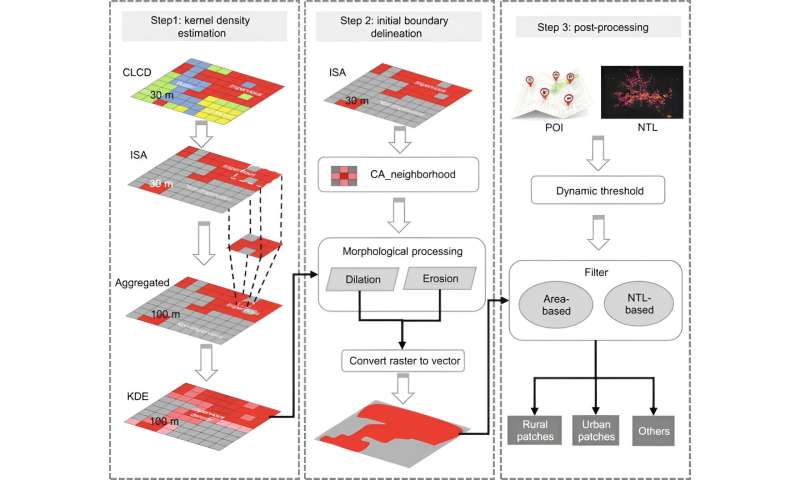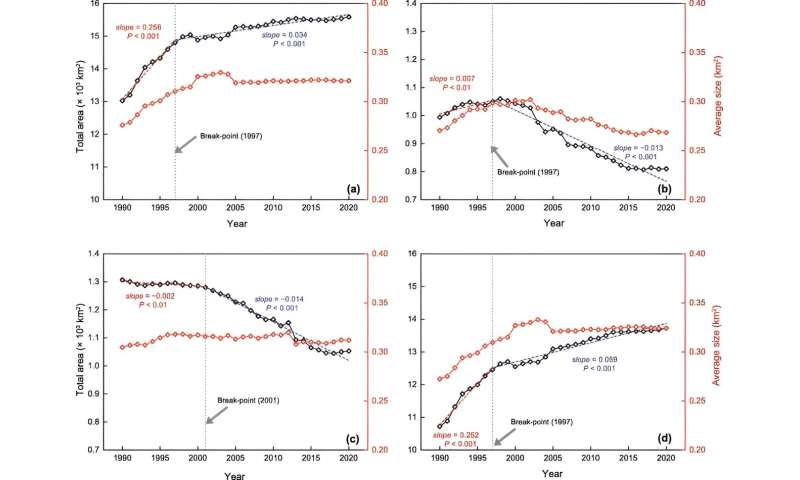Regularity of rural settlement changes driven by rapid urbanization in North China over the three decades: Study

A new study, examining rural settlement changes driven by rapid urbanization in North China was published in Science Bulletin.
Prof. Yansui Liu (Institute of Geographic Sciences and Natural Resources Research, Chinese Academy of Sciences) was the first author of this article, Prof. Yansui Liu and Dr. Cong Ou were the corresponding authors of this article, and Prof. Yurui Li, Prof. Liqiang Zhang (Beijing Normal University), Prof. Jianhua He (Wuhan University) were the co-authors of this article.
The systematic decline of rural areas in the process of rapid urbanization has become a global trend, creating greater challenges for sustainable rural development. As the spatial projection of socio-economic development and living environment in rural areas, the continuous tracking of rural settlements (RUS) is crucial to quantify the imbalance of rural development.
Increasing RUS development with the declining rural population has occurred in many developing countries due to accelerated urbanization, which may accelerate the process of rural hollowing, development weakening, and the loss of ecosystem services in the rural area system, creating great barriers to achieving the sustainable development goals.

However, consistent information on RUS is highly needed but is quite deficient in current research. In this study, the authors provided the first cost-effective and objective way to quantify and characterize the spatiotemporal regularity of RUS changes within a large region over a long-term period.
Main conclusions:
- From a methodological point of view, the RUS dataset that was generated based on the proposed mapping model showed a good agreement with other publicly available datasets, achieving a mean overall accuracy of 84.91% over the three decades in view of the location-based comparison, and a mean correlation value that crosses all scales was greater than 0.8 in view of the area-based comparison.
- From a temporal point of view, it showed a trend of slower growth in the total area and the average size of RUS in the BTH region over the past three decades, along with a trend of widening differences within all RUS patches, and the size of RUS patches exhibited an exponential decay trend with the increase of the number of RUS patches.
- From a spatial point of view, it was found that the spatial distribution of the annual change of RUS areas in the BTH region is extremely uneven, the grids with the increasing and decreasing trend in the RUS area accounted for 76.33% and 23.67%, respectively. RUS areas in more than half of the counties of the BTH region saw a "Convex-I" change type, most of which are far away from the well-developed urban zones and belong to the plain areas engaged in agricultural production.
Main contribution:
The cost-effective mapping model for RUS proposed and the generated results herein are convincing, which extended an annual-wise quantitative detection for RUS transformation and enhanced the understanding of the spatial heterogeneity of RUS across multi-scales, providing more explicit spatial information as well as consistent temporal information for a better understanding the spatiotemporal regularity of RUS changes.
More information:
Yansui Liu et al, Regularity of rural settlement changes driven by rapid urbanization in North China over the three decades, Science Bulletin (2023). DOI: 10.1016/j.scib.2023.08.006
Provided by Science China Press